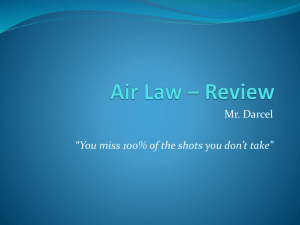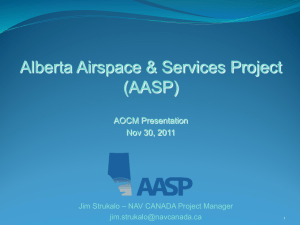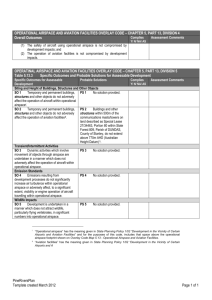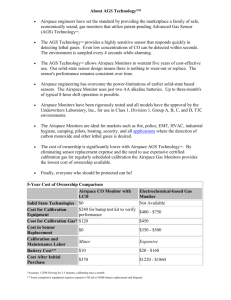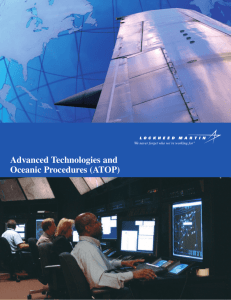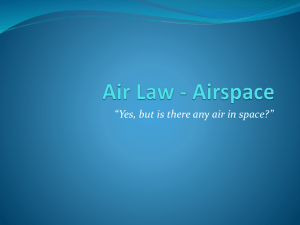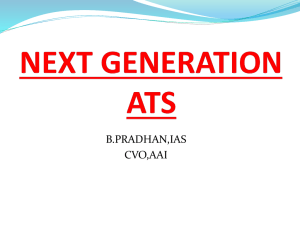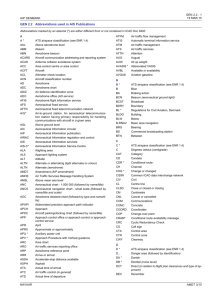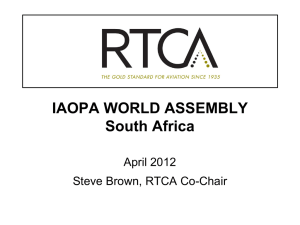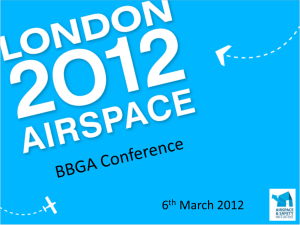National Airspace and Navigation Plan
advertisement
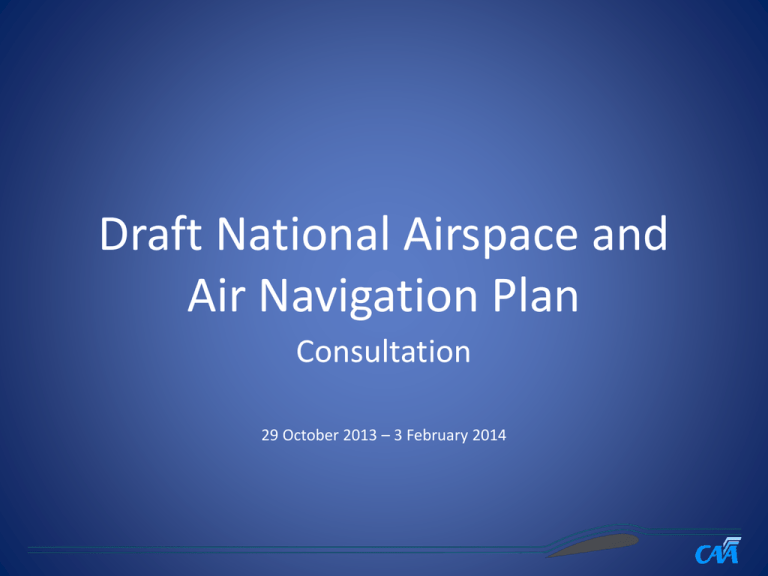
Draft National Airspace and Air Navigation Plan Consultation 29 October 2013 – 3 February 2014 Agenda 10.00am Introduction 10.10am Overview of the draft Plan 10.40am Key Proposals: ATM, Airspace and Aerodromes 11.00am Key Proposals: Meteorological Services, AIM and Communications 11.20am Key Proposals: Navigation and Surveillance Midday Lunch break 12.30pm Discussion and QA session 1.30pm Summary 2.00pm End of session Why have a Plan? Technological changes Satellite technology Information management Communications Air Traffic Management Why have a Plan? Capture efficiency benefits More efficient use of airspace Saves fuel, time and the environment Why have a Plan? Need to manage airspace as demand increases New Zealand International Movements 80,000 60,000 40,000 20,000 0 1995 2000 2005 2010 2015 Why have a Plan? Aging infrastructure (radar, ground based nav-aids) Some key decisions to make ADS-B? Sole Means GNSS? Replace radar? Why have a Plan? International drivers The story so far… National Airspace Policy 2012 • Safety • Reslilence • Compatibility • Efficient • Protection of National Interests • Environmentally responsible • Accessibility • Funded by cost recovery • Integrated • Interoperable Development of the draft Plan • 8 cross sector working groups in each major area • Pulling the Plan to together: Industry peer review group • Consultation, economic and risk analysis • Will go to Cabinet for final approval following consultation New Zealand’s Plan to modernise our airspace over the next decade Plan overview • Outlines practical steps needed to • Provide certainty to the aviation community • Harness the benefits of the new technologies • Ensure that the transition occurs safely • Three stages – 2015, 2018, 2023 • Covers 8 overlapping areas with some significant proposals • A guidance document, but rule making will follow Plan chapters • Navigation – Ground based to performance based navigation • Surveillance –Reducing our reliance on radar • Communications – Incremental improvements • Aeronautical Information Management – Digital and Integrated • Air Traffic Management – From controlling to enabling • Airspace Design – Review and refine • Aerodromes – Increasing capacity • Meteorological Services – Integrating weather data Communications • VHF voice continues as the primary communication medium in the domestic environment • Accept SATVOICE as a primary communication medium in remote oceanic areas • New protocols for ground communications –ATN and VOIP • International Pre-departure clearances via data-link from 2014 • Review demand for data-link in the domestic environment • Implement Communications policy for Remotely Piloted Aircraft. Air Traffic Management • Move from the concept of tactical control to strategic control and enabling service provision – synchronised network management – trajectory-based management – conformance monitoring – Conflict detection using trajectory prediction and conformance monitoring technology • Ensure adequate contingency planning • Education and training on the new environment • Measure performance Airspace Design • Review existing designations • Airspace reviews become more demand driven • Disseminate information and training to operators about the changed routes and airspace structures • Reassess provisions relating to transponder requirements – including an assessment of whether uncontrolled airspace should be transponder mandatory • Ensure airspace rules to cater for aircraft emergencies and civil emergencies. Aerodromes • Master plans for aerodromes should have regard to the draft Plan • Review terminal and airfield design/geometry at critical airports • Policy developed on airport infrastructure needs for NZ • Establish a formalised airport collaborative decision making forum • Review critical infrastructure and systems to identify potential areas where further contingency measures are required Aeronautical Information Management • Complete digitalization including the aeronautical information conceptual model, aerodrome and obstacle mapping and electronic aeronautical charts • Ensure information management is integrated • Aim for new digital aeronautical data to be accessible real-time to all • Manage human factors associated with accessibility of data Meteorological Services • Develop WXXM format for weather data • Aim to integrate weather data with aeronautical information • systems • Aim for real-time weather information to air traffic controllers and into cockpit Performance Based Navigation • Progressively greater reliance on PBN • A ground navigation aid contingency strategy to ensure adequate ground based navigation aids remain • Equipment, operator and training requirements for operators • Supporting regulatory changes • Guidance, education and training standards • Further investigation into options for sole means use of GNSS for New Zealand and Satellite Based Augmentation Systems Surveillance • Strategy for decommissioning the radar network by 2021, including adequate back-up surveillance network • Require ADS-B equipment to be installed on aircraft in a staged way: – From 2018: ADS-B carriage mandatory above FL 245 – From 2021: ADS-B carriage mandatory in all controlled airspace • Education programme for operators, pilots and air traffic controllers on ADS-B • Regulatory changes Consultation Do you support the proposals in the draft Plan? Are there any proposals in the draft Plan you do not support? Is there anything that we have missed that you think should be addressed? Consultation closes 3 February. Send submissions to consultation@caa.govt.nz
